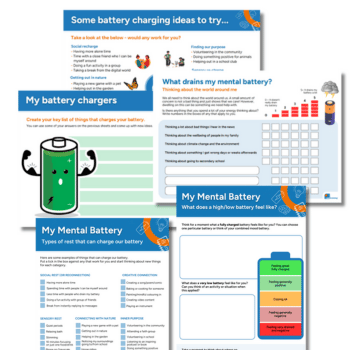School attendance – What causes absence & how to tackle it

As rates of persistent absence continue to climb, what can schools and policymakers do about it?

- by Teachwire
- Classroom expertise and free resources for teachers

Research says that persistent absenteeism is up 117% since Covid. The reasons for these million or so young people not attending school are wide-ranging. Join us as explore the multifaceted issue of school attendance.
We cover strategies for addressing persistent absences among students (and staff) and share evidence-based methods to enhance attendance rates across the board…
Table of contents
What does school attendance research say?
A 2025 study from the National Foundation for Educational Research indicated that schools are better off prioritising individualised approaches to tacking pupil absence over school-wide sanctions. This includes things such as detentions, fines and phonecalls home.
The team conducted semi-structured, in-person interviews and focus groups with staff and pupils. They worked across nine state-funded secondary schools from November to December 2024.
They found that staff recognise the importance of tailoring attendance support to pupils’ individual needs, while acknowledging the workload involved in doing so.
Some participants described how their schools offer rewards, including prize draws and trips, as motivators for good attendance.
Pupils attending schools that recognise good attendance alongside the provision of pastoral support felt more motivated to come to school. Conversely, pupils at schools that prioritise imposing sanctions for pupil absence are more likely to perceive attendance policies as unfair. This is especially when absences are down to reasons outside of their control.
Illness, mental health challenges and term-time holidays were found to be the most common causes for pupil absence among the participating schools. Missed lessons during absence emerging as a major source of anxiety for pupils.
For their part, staff cited limited support from external agencies, such as CAMHS, as being responsible for putting extra pressure on already stretched school teams.
They stated that more consistent support from said agencies would help them:
- better manage pupil needs
- address the root causes of absence
- ultimately improve attendance
Evidence-based strategies for improving school attendance

If we want to take action on persistent absence, we need to dig into the substance behind those alarming statistics, writes Freya Morrissey…
Grace, in Y9, is absent from school again. As her attendance has declined, her tutor has called home multiple times. A letter has been sent, explaining the school’s absence policy and reminding her family that ‘every day matters’, but these approaches don’t seem to have worked.
Now, a third of the way through the school year, Grace’s attendance has dropped below 90%. Mr Baxter, Grace’s head of year, instead wants to try a different strategy to support her and other students on similarly worrying attendance trajectories.
He knows his school isn’t alone in this challenge. He’s spoken to colleagues at other schools that have adopted an array of different approaches to supporting attendance.
He’s seen tight systems of increasingly escalating letters and meetings with families; breakfasts laid on for some students at the start of the day; small ‘nurture’ tutor groups; and interventions aimed at building social and emotional skills.
These approaches are all designed to support students in attending school and lessons more frequently, and demonstrative of the effort school staff across the country will go to, to help their students. Yet Mr Baxter knows he can’t do everything – so what should his next steps be?
Strategies to try
Get below the surface
We need to see beyond the ‘symptoms’ of absence and examine the possible underlying causes, so that we can diagnose more precisely the issue(s) we’re trying to solve.
Through checking attendance data and talking with students and families, various individual and contextual issues can be uncovered, such as:
- Illness (of the student or a relative)
- Anxiety and other mental health challenges
- Family expectations and beliefs
- Commitments outside school
- Undiagnosed or unsupported SEN, making it difficult to access lesson content
- A lack of ‘connectedness’ with the school
Mr Baxter may thus be able to identify factors relevant to Grace and her peers, enabling him to consider approaches better matched to his students’ needs.
Mount a team effort
Thoughtful and diagnostic approaches depend on wider systems within a school working effectively. Teachers and school leaders must be able to reliably gather, report, access and analyse data, and collaborate on appropriate targeted actions. It may be helpful to consider whether:
- The school has comprehensive attendance data, or must address any uncertainties or gaps (e.g. inconsistent records for pupils attending AP)
- Robust processes are in place for staff to report on partial absences during the school day
- Qualitative data is being collected to help diagnose and understand reasons for persistent absence
These points may call for action on the part of multiple staff – such as tutors routinely phoning home after specific absence thresholds have been reached.
Learn from others
Attendance: Beyond the Percentage
This informative blogpost from Blackpool Research School further explores the details behind headline attendance data.
FFT Edu Data Lab
A study examining the likelihood of pupils who live further away from their school being absent more often, which sheds some useful light on the logistical factors that can affect attendance.
Attendance Interventions rapid evidence assessment
A summary produced by the Education Endowment Foundation of existing research on interventions seeking to improve school attendance.
Freya Morrissey is the EEF’s specialist for learning behaviours and a secondary school leader of English and literacy; for more advice from the on the topics raised in this article, visit the EEF’s website.
Mor ways to address persistent poor school attendance
Hannah Day looks at how schools can address the persistent absence that’s shaping up to be one of the pandemic’s most lasting impacts…
Many students can remain stubbornly difficult to get into school, which the pandemic and its aftermath has only made worse.
The MIS provider ESS SIMS carried out a survey that found a worrying decline in post-COVID school attendance, with around 80% of heads stating that absenteeism was presenting a problem for their schools (and those in urban environments rating the problem higher than their rural counterparts).
Only 53% of independent schools pointed to absenteeism as being an issue for them, suggesting that the links we’ve seen between economic inequality and absenteeism still remain.
Judging by the survey’s responses overall, it seems that urban schools with a high proportion of students on free school meals were those contending with the most difficult absenteeism challenges.
In January 2022, the DfE launched a consultation on four proposals for supporting schools, trusts and LA with attendance issues – including the introduction of statutory guidance for managing and improving school attendance; setting standards for LA attendance services; issuing fixed penalty notices for incidents of school absence; and bringing academy rules around granting leave of absence in line with those of maintained schools.
In a response issued in May 2022, the government indicated that it intended to proceed with all four.
Start with the person
Now is the ideal time to review how your school currently approaches the issue of absence.
Much of what we do is more about working with people, rather than the content of our subject. We can only teach meaningfully if we have engaged students present who are in a position to learn.
“Much of what we do is more about working with people, rather than the content of our subject”
With many persistently absent students, the causes of their low school attendance will be broadly known. Whether you have a grasp of those causes or not, though, make time for a review.
I myself only recently discovered that one of my students, who had been struggling to attend classes and concentrate when present, had lost her father and told nobody.
Needless to say, supporting a grieving teenager calls for a very different approach to supporting a lazy one.
The details in that case came to light during a careers meeting. Providing students with opportunities to consider their later lives in personal, non-threatening spaces can give you the chance to learn more about their unique situations.
If prior behaviour management strategies or school counselling have been unsuccessful, then support with a more practical focus can really help, since the active focus will be on real-world considerations, rather than emotional ones.
School clubs
When addressing persistent school absence among younger students, we’ve seen some success by getting them involved in after-school groups, such as sports and drama clubs.
These have allowed them to mix and make friends across year groups, and see themselves and others in a different light outside of the classroom.
What the careers meeting and after-school club successes demonstrate is the important of connecting with students and what’s important to them.
By making school attendance the sole focus of our interactions with students, we risk giving them a predominantly negative experience of conversing with staff, which could compound the situation even further.
At the same time, we must also consider practical issues – particularly given the increased costs of paying for food, travel and uniform compared to just a year ago.
As the aforementioned research makes clear, the more disadvantaged a student’s background is, the more likely it is that they’ll be serially absent.
Lazy stereotypes
What we mustn’t do, however, is fall back on lazy stereotypes of unengaged parents and disaffected young people.
Such factors may well be involved in some cases – but what if they’re not? What if there’s a simple solution to be had by providing some form of practical support?
“What if there’s a simple solution to be had by providing some form of practical support?”
The Glasspool charity trust operates an essential living fund, which is open to any legal resident anywhere in the UK.
There are also a number of community and religious groups who can offer support locally. Contact any such groups near you and see if they can be enlisted to help ensure that your pupils are having their basic needs meet.
After all, if a young person isn’t already warm, regularly fed and clothed at home, how readily will they apply themselves to the task of learning?
Another consideration in some urban areas is the targeting of vulnerable young people by organised gangs.
If there’s a risk of gang influence affecting students at your school, you may be able to seek help from the award-winning, anti-youth violence charity Power the Fight.
Engaging families about school absence
Don’t forget that families can provide insights you won’t get directly from students themselves. When approaching families, always do so with a warm, positive attitude.
Let them know that you’re interested in the whole person and how the school can help. It’s vital to remove any sense of shame or judgement.
Many parents I’ve spoken to feel that schools have something of an ‘us and them’ approach when meeting them.
Without open dialogue, it won’t be possible to build a meaningful relationship. So however ‘bad’ you perceive someone’s parenting to be, suspend judgement now.
“Many parents I’ve spoken to feel that schools have something of an ‘us and them’ approach when meeting them”
Find out how a parent or carer sees their child. What do they love about them? What do they find frustrating? When did the current issues start? Was there a slow build-up, or some catalyst that suddenly made things worse?
What does the student do in their free time? When they’re not at school, who are they? What do they love, and what are they good at?
Conduct yourself as if you know nothing and want to know everything. You may be surprised at what you end up discovering.
When the time comes, discuss with home what might be considered ‘positive attendance’ as a starting point.
A persistently late student could actually be achieving quite a lot just by getting to school at all. Acknowledge and verbalise this positively first; then seek to improve on it.
We can’t accept absences from school, but we can mix the support and discipline we respond with. If a student responds to a firm hand, then by all means use it.
But in my experience at least, many more will respond better to more personal approaches.
Hannah Day is head of art, media and film at Ludlow College.
Case study: Mossbourne Federation

Peter Hughes – Mossbourne CEO and author of Outstanding School Leadership – explains how his federation has successfully maintained high attendance post-pandemic by cutting through the noise…
For us at Mossbourne, attendance comes hand in hand with high expectations. We’re clear about our expectations and communicate these standards to our pupils and their parents.
It’s a simple concept. However it does come with challenges. It’s important to understand there is a difference between a child who just can’t be bothered and is being a bit lazy versus a child who genuinely has issues that are a cause for concern. These are the children we need to find.
Genuine issues
Our job as educators is to cut through the noise and find out who truly needs our support. A lot of schools get wrapped up in the noise. When I say noise, I mean scenarios like:
“Sarah feels bad because Jonny said something mean to her in the playground, so Sarah should be out of lessons.”
To be blunt, this is a part of life. When we facilitate the noise, we allow the noise to become the reality. Our pupils need to understand that someone saying something that upsets them or makes them angry doesn’t mean they can’t get on with their studies.
“Our job as educators is to cut through the noise and find out who truly needs our support”
An example of a genuine problem is when a child has parents with mental health issues. This could be causing them to have mental health issues themselves which is stopping them from being able to get to school. They’re facing real challenges that they need our help with.
Two fundamental problems
Feeding into the noise causes two fundamental problems:
Firstly, we’re telling that child that the issue is worse than it is. Think about a small child who falls over and scratches their leg and cries their eyes out. They’re not critically hurt. They’re crying because they’re shocked at what they’ve just done.
We need to comfort them, tell them that everything’s OK and put a plaster on it if they need it. It’s at this point the child will more than likely be happy again and be ready to carry on with their day.
If we turn around and make it a big deal, we’re reinforcing ‘the noise’ and worsening the situation. As adults and educators, we must show our children how to process life events. It helps them to understand what’s a big deal and what’s just unpleasant.
Secondly, the more noise we create as educators, the less likely it is that we will recognise genuine cases and give students the support they need.
Children who need our help are getting lost in a system that is too busy dealing with the noise. This is unacceptable. It’s our job to be straightforward, direct and honest with children and their parents or carers.
Real impact
To make a real difference we need to spend our time understanding the pupils who are most at risk of falling behind in their education due to genuinely not being able to make it to school.
“Children who need our help are getting lost in a system that is too busy dealing with the noise”
What’s happening in their lives? What is it that they need from us? What supporting services do we need to bring in to help?
Cutting through the noise is one method in our attendance strategy that has allowed us to consistently maintain an average of 97% attendance across our schools. This is despite our higher-than-national-average pupil stats for SEN, EAL and pupil premium.
I’m incredibly proud of the team at Mossbourne and our pupils for their ongoing commitment to live our core values: excellence; no excuses; unity.
Together we strive for the common goal of being the best we can be so that every pupil, teacher and member of staff fulfils their potential.
We achieve this through our mission to change children’s lives for the better by creating environments where learning is the norm.
To make this a reality, pupils need to be in school. This is why school attendance is and always will be a high priority for us.
Mossbourne Federation uses ProgressTeaching, a teaching improvement platform designed by Peter Hughes that puts data and actionable insights at staff’s fingertips.
What to say when pupils ‘don’t see the point’ of school
Natasha Devon explores some of the complex and deep-rooted psychological reasons as to why some students don’t want to attend school…
Young people are growing up in a neoliberal, hyper-individualistic and competitive society where smartphones can – at least ostensibly – give them access to more information than any of the adults in their community. No wonder they feel disconnected.
Furthermore, they’re presently participating in an archaic education system that appears to be preparing them for jobs that either don’t exist any more, or which won’t by the time they enter the employment market.
And even if they do excel, and end up in a highly-paid profession that somehow enables them to move out of their parents’ house before the age of 30, the world’s still on fire and we’re on the brink of World War III, with the very real possibility that millions will die.
“They’re presently participating in an archaic education system that appears to be preparing them for jobs that either don’t exist any more”
Any survivors will be engaged in an ongoing conflict for limited resources, in which our GCSE grades won’t matter.
If a teenager presented me with those kinds of arguments, I don’t think I’d be able to completely dismiss them.
So, how do we make children and young people more enthusiastic about the prospect of going to school?
Resource restoration
The first, and most obvious answer is that schools – which have been battered by multiple rounds of austerity since 2010 – need their resources back.
That includes everything which makes schools safe (nurses, counsellors, TAs), as well as the stuff that makes them fun and engaging (sport, arts, music).
When speaking with young individuals during my school visits, I’ll usually talk about how education gives them choices.
They might not see how every single thing they’re learning is directly applicable to the life they lead now, or even the one they aspire to later, but having a decent clutch of exams under your belt gives you more choices for the next phase of your life.
Vital perspective
I also tell students that this is what they’re doing right now. Either way, they’re going to have to get through it, so they should try and get as much value from it as they can.
This is how I persuade myself to do stuff that I find tedious – finances, miscellaneous admin, cleaning my bathroom, spending time with friends who moan endlessly about things that don’t matter.
We all have to engage in activities we don’t enjoy. I often think of a line from Bridget Jones’ Diary, in which our protagonist paraphrases a Buddhist sentiment she once read, which says that ‘The joy and purpose to be gained from chores was not that you were getting the washing up done, but simply that you are doing the washing up.’
“We all have to engage in activities we don’t enjoy”
This is, of course, a form of mindfulness. And in a world where we’re being constantly distracted, acting like lab rats chasing little dopamine rewards with no sense of perspective or purpose, I suspect that ‘This is what you’re doing right now’ is something that young people really need to hear.
Natasha Devon is a writer, broadcaster and campaigner on issues relating to education and mental health. Find out more at natashadevon.com.







